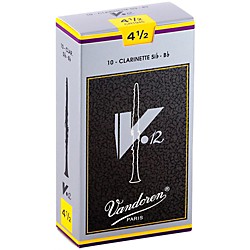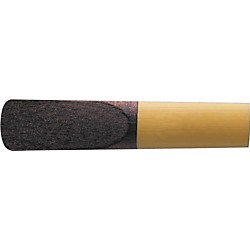July 24, 2015
When’s the Right Time to Replace Clarinet Reeds?


Whether you’ve been taking clarinet lessons for two weeks or two years, knowing when to replace clarinet reeds can be tricky. Some musicians think reed replacement is a money-grab by reed manufacturers, while others understand that it’s just a trick of the trade. Regardless of your opinion, it’s important to understand that brand new reeds, in addition to proper care and maintenance of your clarinet, can help make your instrument produce the best sound possible. So, if you’re curious about whether or not it’s time for you to replace your clarinet reeds, you’ve come to the right place. From damaged reeds to icky black mold, here’s everything you should keep an eye out for when it comes to the reeds of your clarinet.
Is Your Reed Damaged?
If you’re noticing that the tip of your reed is chipped or that your clarinet reed is otherwise cracked or damaged, it’s time to replace the reed. Here’s why: reeds vibrate at a very high frequency and, as you’ve probably already guessed, damaged reeds can’t vibrate as quickly as their undamaged counterparts. While some clarinet players advocate using superglue to hold cracked reeds together, the polymers in glue won’t vibrate the same way as bamboo. Besides, industrial strength glues shouldn’t be anywhere near your mouth or nose. If you notice a lot of cracks or warps in your reeds, you should consider making the switch to synthetic reeds- they’re easier for newer clarinetists to play, require much less maintenance, and come at a lower price point.


While cracked reeds definitely need to be replaced, not every chipped reed needs to be tossed right away. Chips near the center of the clarinet reed are worse than chips in the corners, and you may be able to get away with playing reeds with chips near the corners for a little while longer. If you prefer to use your reeds for as long as possible, there’s a remedy besides replacement: clipping the tip shorter and re-scraping it. It does require an element of technical know-how, so don’t attempt to re-scrape a reed if you’ve never done it before.
Are You Noticing Mold?
It may sound gross, but if you notice black mold growing on your clarinet reeds it’s time to toss them straight in the trash. Over time, the bacteria in your mouth will cause mold to grow and, if you continue to play with moldy reeds it’s like sucking on an old piece of bubblegum day in and day out. Even if you think you can scrape the mold off with a utility knife, remnants will remain and continue to grow. Regardless of where you store your reeds, best practice is to soak them in water instead of your mouth before storage. As mentioned in the previous paragraph, synthetic reeds are a good choice for a variety of reasons, one of them being that they tend to grow mold less often than their natural counterparts.


Is Your Sound Quality Deteriorating?
Although deterioration in sound quality can be representative of a variety of issues, in many cases poor sound quality is a side-effect of playing old reeds. If you can’t reach the upper notes properly or find yourself struggling to play through songs that used to be fairly easy, remove your reeds and investigate.
For those just starting out, reeds can last up to six months. Once you play and practice more frequently, this “cycle” can take anywhere from 2-4 weeks. Once you become more comfortable with the clarinet, you’ll have a general idea of when you should be replacing your reeds. Still, other clarinetists change reeds depending on the weather. Believe it or not, some reeds perform better in warmer environments, while others prefer colder weather. As mentioned, you’ll become more familiar with your reeds with time.
Can the Life of Clarinet Reeds Be Extended?
If you’re taking lessons at a professional studio, you probably notice that the more experienced clarinetists carry their reeds around in a nifty little case. While all reeds come packaged in individual sleeves, these sleeves aren’t ideal for long-term storage. Not only do plastic sleeves do a poor job at preventing warpage but, if you store your reeds in your saxophone case, they can easily become chipped or damaged during transport. In addition to properly wetting and maintaining reeds, investing in a quality reed case is one of the most important things you can do to extend the life of your clarinet reeds, regardless of the brand, hardness, or price point.
For even more information about reeds, check out Tips for Reed Success: Break In, Rotate, and Properly Store Your Reeds.







